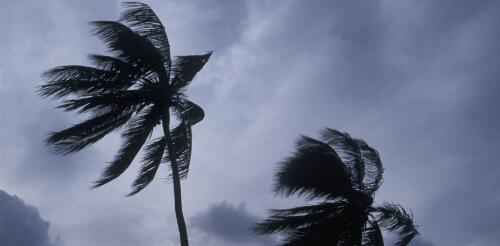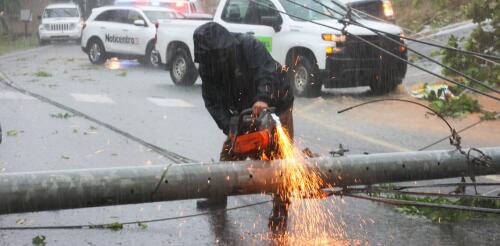Puerto Rico
Preparing for Atlantic hurricane season is always a priority in the Caribbean, especially when forecasts project high numbers of storms, as they do for 2024. The region’s most devastating storm in recent years, Hurricane Maria, struck in September 2017 and inflicted unprecedented destruction on Puerto Rico, Dominica, St. Croix and other islands. Maria killed more than 3,000 people and caused about US$96 billion in damage. It devastated Puerto Rico’s electric power system, leaving 1.5 million customers in the dark for up to 328 days – the longest blackout in U.S. history. These outages had cascading impacts on other infrastructure, such as water and communications systems. Today, the Caribbean region is experiencing new climate-related challenges. Prolonged extreme heat and humid days are increasing because of the accelerated warming of ocean waters. In response to these increasingly frequent and extreme weather events, I teamed up with a dozen other resea...
Wildfires destroyed the Hawaiian tourist town of Lahaina on Aug. 8 and 9, 2023, leaving many of its roughly 13,000 residents homeless. Fires also burned in other areas on Maui, Hawaii’s second-largest island, and its Big Island. President Joe Biden issued a disaster declaration on Aug. 10, which authorizes federal aid for communities in harm’s way. The Conversation asked Ivis García, an urban planner who has researched disaster recovery efforts in Puerto Rico, to explain how the U.S. government responds to disasters like these and how Maui’s geography could interfere with aid delivery. Is it harder for aid to reach an island than the US mainland? The Federal Emergency Management Agency, which delivers emergency assistance after disasters, has to deal with big transportation challenges in cases like this. Initially, FEMA will be focused on bringing food, generators, cots, meals and anything else people need, and that aid will be arriving on planes and boat...
Five years after Hurricane Maria wreaked havoc on Puerto Rico, Hurricane Fiona has killed at least four people, caused widespread flooding and left hundreds of thousands of residents without water or power. Maria caused extensive damage to Puerto Rico’s power grid in 2017 that left many residents without electricity for months. Rebuilding it has been hampered by technical, political and financial challenges. Carlos A. Suárez and Fernando Tormos-Aponte are social scientists who study Latin American politics and environmental justice. They explain some of the factors that have hindered efforts to recover from Maria and prepare for subsequent storms on this island with a population of 3.2 million people. Failed promises from privatization Carlos A. Suárez Carrasquillo, Associate Instructional Professor, Political Science, Center for Latin American Studies, University of Florida In less than a century, Puerto Rico’s electricity system has gone full circle fr...


